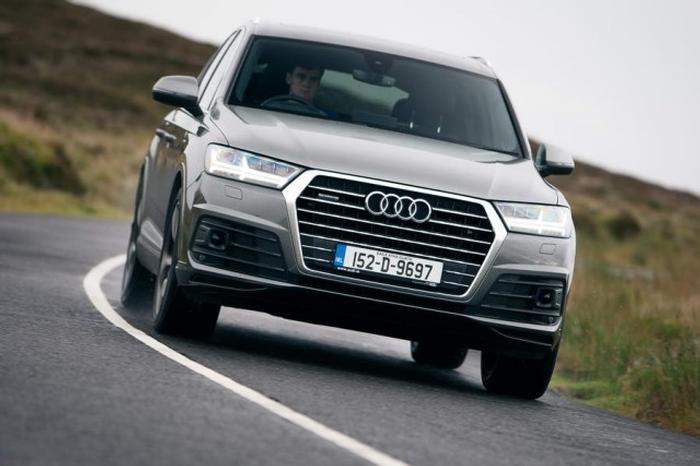2015 Audi Q7 SUV Review

Buyer's guide to the Audi Q7 Mk2 (2015-present)
Review
What's it like?
The Audi Q7 Mk2 builds on the success of the heavyweight first-generation model by adding tech and removing weight. The result is a seven-seat premium SUV that offers surprisingly nimble handling for a car of its size, while retaining a versatile cabin layout.
The original Q7 was Audi's first SUV, but by the time the second generation appeared, there were plenty of rivals to contend with. Front runners of a similar age include the BMW X5 and Mercedes GLE (these have seven seats as an option with certain engines), while the Volvo XC90 and Land Rover Discovery should be on any potential shortlist as well. Elsewhere, the Lexus RX Mk4 hybrid has a seven-seat 'L' variant, and the Range Rover Sport could also be had with seven seats as an option. If you're not fussed about having seven seats, then the five-seat Porsche Cayenne is worth considering - it uses the same running gear as the Q7 but is even sharper to drive.
Which model to go for?
No version of the Audi Q7 will feel basic, but while SE and Sport versions are available, the majority of used models for sale are higher-spec S line variants. These feature equipment such as leather trim, bigger wheels and a slightly sharper looking body kit. Inside, you'll get plenty of tech, with Audi's Virtual Cockpit digital dials plus twin touchscreens on the centre console - with the lower screen used for climate controls. All versions of the Q7 feature a seven-seat layout, but be warned that the rearmost seats aren't the most spacious in the sector - a Volvo XC90 has more room in the back.
While smaller engines were offered in some markets, most Q7 Mk2s use 3.0-litre V6 petrol or diesel engines. All cars have quattro four-wheel drive, while all models have either a six-speed auto or a ZF-sourced eight-speed auto, depending on age and the powertrain fitted.
The 218hp 3.0 TDI was replaced by a 231hp unit in 2019, which is badged 45 TDI to add confusion. Likewise, the 272hp 3.0 TDI was replaced by a 286hp V6 diesel badged 55 TDI in the same year. For the petrol cars, the 333hp 3.0 TFSI was replaced by the 55 TFSI, which uses a 340hp version of the same engine.
The Q7 e-tron is the plug-in hybrid variant, but it's rare. Early cars had a 2.0 TFSI petrol to go with an electric motor and 17.3kWh battery for a total output of 367hp, but in 2019 this was replaced by two variants called 55 TFSI e and 60 TFSI e. These both swapped the four-cylinder engine for a 3.0-litre V6, but with the same electric motor and battery set-up, producing up to 381hp and 456hp, respectively. A diesel e-tron was sold from 2016-2018 and had a 3.0 TDI and the same battery system as the petrol cars for 387hp.
At the top of the range the SQ7 is the performance flagship - unlike the Q8, there is no RS Q7. From 2016-2020, the SQ7 had a 4.0-litre twin-turbocharged V8 TDI diesel with 435hp, but this was replaced by a petrol V8 of the same capacity in 2020 that came with 507hp and a 0-100km/h time of 4.3 seconds.
Does anything go wrong?
While the Q7 Mk2 has plenty going for it in terms of space, tech and driving, it's not particularly reliable. Warranty data shows that cars can suffer from expensive engine problems, while suspension and fuel system repairs are also reported. What's more, the costs to put things right are said to be on the high side.
There have been a number of recalls, too (12 in total), including bulletins relating to the steering, airbags, seats, suspension, engines and fuel system.



